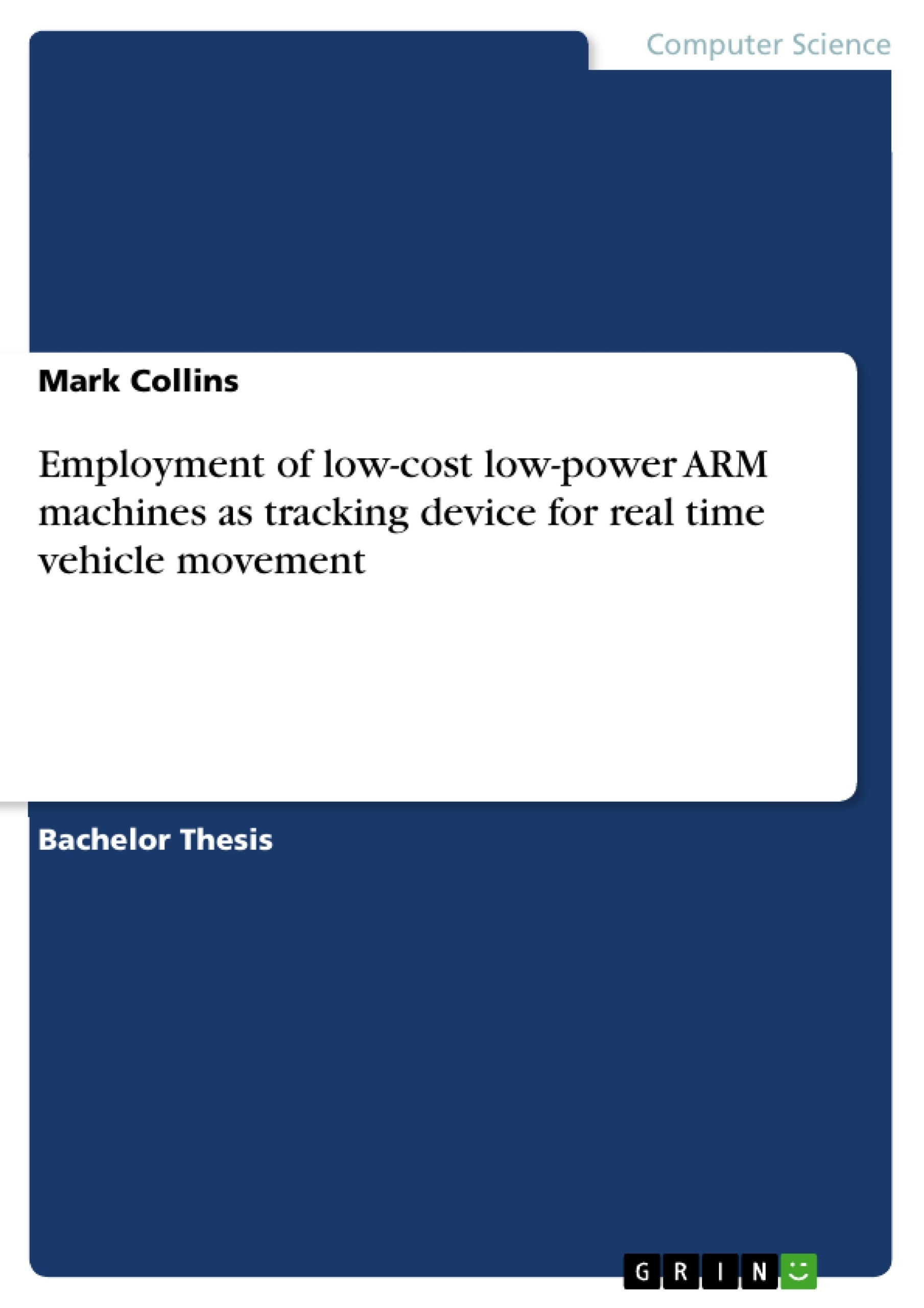This undergraduate Bachelor Thesis examines the use of a raspberry pi towards a real-time computer vision system.
Advances in technology in recent years have steadily increased computational performance, ushering in the availability of affordable powerful, single board micro systems. This project attempts to showcase an application of low cost hardware for performing modern computer vision algorithms, paired with imaging sensors to emulate an embedded system. In order to achieve this goal, the project must demonstrate background learning, object detection, and establish methods for monitoring the real time movement of pedestrians and vehicles on a road. The implementation will make use of a Raspberry Pi type Model B as the main piece of computational hardware to be employed to an IP camera.
Inhaltsverzeichnis (Table of Contents)
- Introduction
- Motivations behind this project
- Background
- Content Summary
- Literature Review
- Background Modelling
- Static Reference Images
- Background Learning
- Blob Detection
- Object Tracking
- Optimization
- Methodology
- Tools
- Hardware
- Software
- Methods
- Blob Detection
- Tracking
- Implementation
- Development OS
- Software Methodology
- Methodology Evaluation
- Background Modelling
- Frame Differencing algorithm
- Median Filter
- Grimson Mixture of Gaussian Modelling
- Blob Extraction
- Tracking & Counting
- Results
- Plans for testing
- Results
- A Process latency
- B Higher Resolution latency testing
- Tracking accuracy
- 24 Hour Stress Test
Zielsetzung und Themenschwerpunkte (Objectives and Key Themes)
This dissertation explores the feasibility of using a low-cost, low-power ARM machine, specifically the Raspberry Pi Model B, for real-time vehicle tracking using computer vision techniques. The project aims to demonstrate the effectiveness of this approach by implementing background learning, object detection, and movement tracking capabilities within an embedded system. Here are the key themes explored in the dissertation:- Cost-Effective Computer Vision: Investigating the potential of affordable hardware for advanced computer vision applications.
- Real-Time Vehicle Tracking: Implementing algorithms and methodologies for monitoring the movement of vehicles in real time.
- Background Modelling: Examining various techniques for separating foreground objects from the background, including frame differencing, median filtering, and the Grimson Mixture of Gaussian model.
- Blob Detection and Tracking: Developing methods for identifying and tracking individual objects within a scene, such as vehicles.
- Embedded System Design: Combining hardware and software components to create a functional and practical embedded system for vehicle tracking.
Zusammenfassung der Kapitel (Chapter Summaries)
- Introduction: This chapter introduces the motivations behind the project and provides context by discussing the recent advancements in low-cost, powerful computing hardware. It also outlines the key objectives and the scope of the dissertation.
- Literature Review: This chapter delves into existing research on computer vision techniques relevant to vehicle tracking, including background modelling, blob detection, object tracking, and optimization strategies.
- Methodology: This chapter details the tools and methods employed in the project. It describes the hardware platform (Raspberry Pi) and software components (OpenCV, Python), along with the specific algorithms used for background modelling, blob detection, and tracking.
- Implementation: This chapter provides a comprehensive overview of the project's implementation, including details about the development environment, software methodology, and the implementation of various algorithms for background modelling, blob extraction, and tracking.
- Results: This chapter presents the results of the project, including performance metrics like processing latency, tracking accuracy, and the results of a 24-hour stress test. It also discusses the limitations and challenges encountered during the implementation.
Schlüsselwörter (Keywords)
This dissertation investigates the application of computer vision for real-time vehicle tracking on a low-cost ARM machine. The key areas of focus include background modelling, blob detection, object tracking, and embedded system design. The project highlights the potential of affordable hardware and open-source software for advanced computer vision applications, demonstrating the feasibility of implementing real-time vehicle monitoring using a Raspberry Pi Model B.- Citar trabajo
- Mark Collins (Autor), 2013, Employment of low-cost low-power ARM machines as tracking device for real time vehicle movement, Múnich, GRIN Verlag, https://www.grin.com/document/275269



